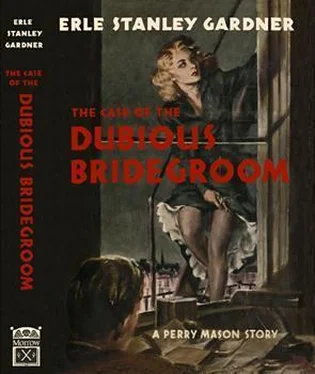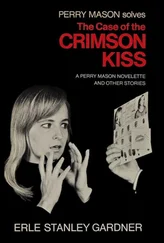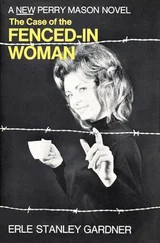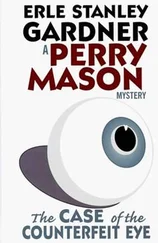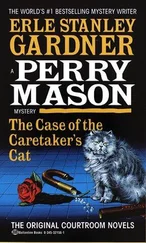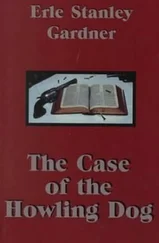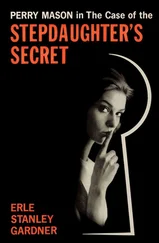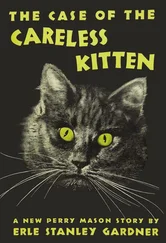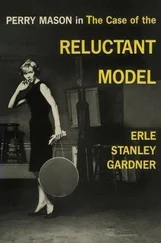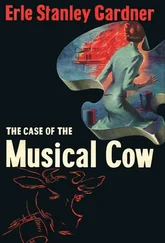“Try and understand the question,” Mason said. “Was there anything in the tracks of the car that you say had been left waiting there that showed it had been left waiting — in the tracks of that one particular car?”
“Well, no,” the chief said, and then added, by way of explanation, “Naturally there couldn’t be. You can’t tell from car tracks whether a car just drove in and then went right out, or whether it stopped for an hour, or two hours, or four hours, unless you had some change in condition, such as a rainstorm while the car was parked there or something.”
“Oh,” Mason said with a disarming smile, “then you were mistaken in stating to the jury when you gave your testimony on direct examination that the tracks of the parked car showed it had been left there for a while?”
“Sure. There was nothing in those tracks,” the man said. “It’s the way you have to reconstruct the whole picture from the tracks of that other car.”
“So you were mistaken?” Mason said.
“Well... I... I guess so.”
“I knew you were,” Perry Mason said, smiling disarmingly, “I just wanted to see how difficult it would be to make you admit it. That’s all, Chief. Thank you.”
“Just a minute,” Covington shouted, getting to his feet. “You weren’t mistaken in stating that the murderer left his car there while he went out and committed the crime and then drove the other car up to the position immediately parallel to his parked car, were you, Chief?”
“Come, come,” Mason said, smilingly. “I’ll have to object to counsel leading his own witness. I can ask leading questions on cross-examination but counsel can’t ask them on direct or redirect.”
“The question is leading,” Judge Minden said. “The objection is sustained.”
“Well, what did happen?” Covington asked.
“While the witness was present, of course,” Mason amended.
“Well, he can tell what happened from an examination of the tracks.”
“He tried to tell,” Mason said. “He’s given some conclusions from two sets of tracks. I take it no photographs were made of those tracks?”
“They were all tramped out before our photographer got there,” Covington said.
“Well, of course, the defendant isn’t responsible for that,” Mason reminded him.
“Well, tell us about those tracks. What do they show?”
“Objected to as calling for a conclusion of the witness,” Mason said. “No proper foundation has been laid.”
“Sustained,” Judge Minden snapped, but then he added somewhat acidly, “the witness has certainly given his conclusions previously as to some phases of these tracks, and without objection.”
“Quite right, Your Honor,” Mason said, smilingly. “And then admitted he was mistaken.”
“Well, he wasn’t mistaken about what happened,” Covington snapped.
“The witness admitted he was mistaken,” Mason said.
“Very well,” Covington said sneeringly. “You may have your technicality, but I think the jury understands.”
“I’m quite certain they do,” Mason said.
“Your next witness,” Judge Minden said to Covington.
A bailiff entered, walked over to Perry Mason, handed him a folded paper.
The lawyer unfolded it, read it.
It was a citation asking him to meet with the grievance committee of the Bar Association at eight o’clock the following evening for a discussion of charges that he had tampered with a witness in a manner that resulted in changing the testimony of the witness.
Mason refolded the paper, slipped it into his pocket.
Covington watching Mason’s expressionless face said to Jarvis, “Damn him, that will fix him. He’s trying to pretend he doesn’t give a hoot, but he’s now in a hell of a spot.
“If he tries to break Irving down on cross-examination tomorrow, he’ll be cutting his own throat. If he lets his testimony stand without trying to impeach the witness, he’ll be cutting his client’s throat.
“We’ll teach that fellow he can’t pull his fast ones when he’s dealing with us.”
“Come, come, gentlemen,” Judge Minden said irritably, “let’s get on with the case.”
Samuel Jarvis called a surveyor, introduced maps and diagrams. He called the autopsy surgeon. Pie called a friend who identified the body, then said, “If the Court please, it’s approaching the hour of adjournment.”
Judge Minden nodded. “I think we’ve made very good progress today,” he said. “I’m not going to have the jury confined, but the jurors are admonished not to discuss the case among themselves or with anyone else, and I’m going to ask the jurors not to read the newspapers, to carefully avoid reading anything concerning this case. You will not discuss the case with anyone nor permit it to be discussed in your presence. You won’t form or express any opinion until the case is finally submitted to you. Court’s adjourned until ten o’clock tomorrow morning!”
Walking out of the courtroom and down the long corridor, Covington said to his assistant, “I can see how Mason has built up a reputation for himself. He’s a grandstander, he’s smart, and he’s always putting on a show for the jury. Tomorrow I’m going to have the great pleasure of knocking the wind out of him. We’re going to smash that poise of his like a gunner smashes a clay pigeon.”
“With both barrels,” Samuel Jarvis agreed, feelingly.
“With both barrels,” Hamlin Covington promised.
Back in the courtroom, Mason turned to reassure his client. “Keep a stiff upper lip, Garvin.”
Garvin smiled wanly. “What was that paper the officer served on you. Does it concern me?”
“Not in the least,” Mason assured him. “It concerns me.”
When court reconvened the next morning, Hamlin L. Covington, having slept on the events of the previous day, and having made his first appraisal of Mason’s character, was warily watchful as he proceeded to lay the foundation for his knockout punch.
Records were introduced showing the marriage of Edward Charles Garvin to Ethel Carter. Then by witnesses Covington proved the Mexican divorce and the marriage to Lorraine Evans. Then Covington sought to introduce certified copies of the records showing the filing of the complaint charging Garvin with bigamy, the warrant which had been issued for his arrest.
“Now then,” Judge Minden said, as Covington handed up the certified copies of the records which he proposed to introduce in evidence, “I take it this is the point at which we can argue the matter which was touched on in the district attorney’s opening statement. I presume you’d like to have the jury excluded, Mr. Mason, while you make your objection and argue it.”
“On the contrary,” Mason said, smiling at the judge, “after having thought the matter over, and in view of the manner in which the evidence has now been introduced, I think that it is a proper part of the district attorney’s case. It would go to show motive, under the hypotheses claimed by the district attorney, so I’ll make no objection whatever.”
Covington, who had been eagerly looking forward to a courtroom battle wherein he could best Mason on the lawyer’s legal objection, yielded with bad grace. “You made enough commotion about it when I merely touched on it in my opening statement,” he said.
“That was before you had offered orderly proof,” Mason told him in the manner of a teacher rebuking an ignorant and presumptuous pupil. “As the Court pointed out to you, the matter should have been handled in this way. Now that you’re following this procedure I have no objection whatever, Mr. District Attorney.”
Читать дальше
